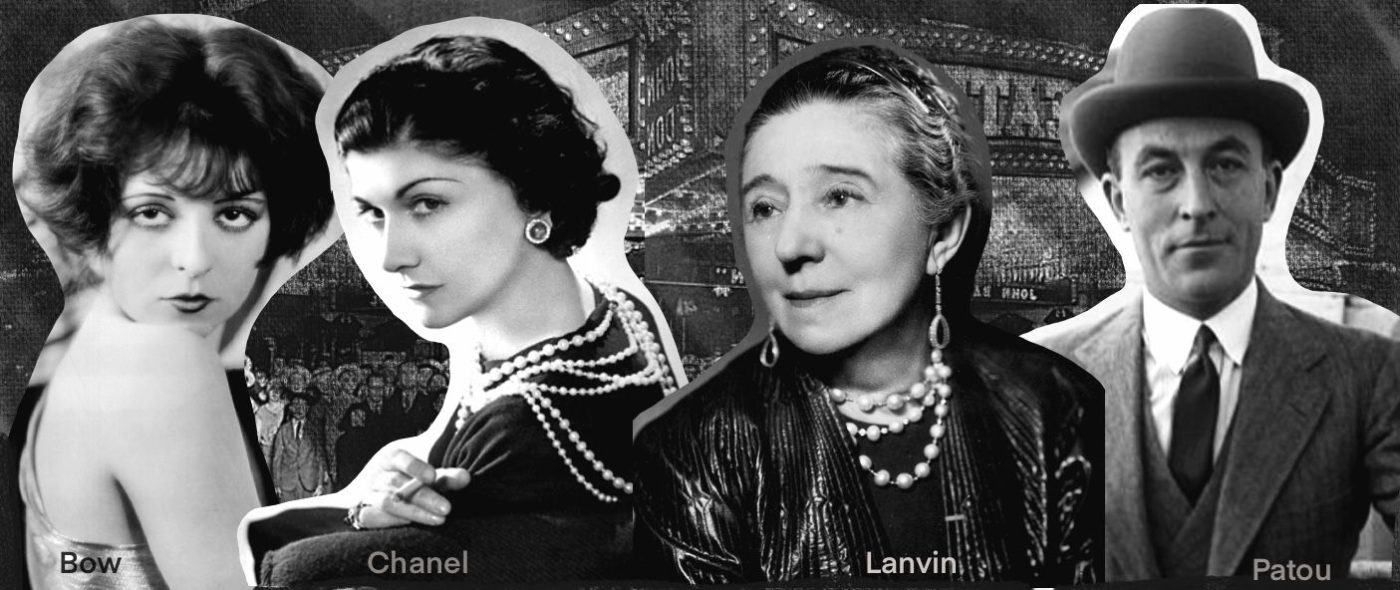The 1920s, often referred to as the Roaring Twenties, was a decade marked by unprecedented social change and cultural dynamism. This period, nestled between the devastation of World War I and the economic crash of 1929, saw a dramatic shift in fashion that reflected broader societal transformations. The 1920s was an era of liberation, modernity, and a break from tradition, which was vividly expressed through its fashion trends, iconic garments, and influential figures.

Influences on 1920s Fashion Trends
- Social Liberation and the Jazz Age: The post-war period brought about a sense of liberation and a desire to break free from the strictures of the past. The emergence of jazz music and dance clubs created a new social scene where youth culture thrived. This “Jazz Age” culture demanded more relaxed and flamboyant styles of dress, leading to the rise of the iconic flapper dress.
-> Social Liberation - Women’s Suffrage Movement: The 1920s witnessed significant progress in women’s rights, notably the right to vote in many countries. This newfound political empowerment influenced fashion, as women began to adopt more practical and comfortable clothing, moving away from restrictive corsets and long skirts.
- Technological Advancements: Advances in manufacturing and materials allowed for new types of fabrics and clothing designs. Rayon, also known as “artificial silk,” became popular, providing an affordable and versatile alternative to traditional silk.
- Cinema and Celebrity Culture: Hollywood emerged as a powerful cultural force during the 1920s. Film stars like Clara Bow, Louise Brooks, and Rudolph Valentino became fashion icons, inspiring fans to emulate their style both in the United States and abroad… Read more

Key Garments of the 1920s
- The Flapper Dress: Perhaps the most iconic garment of the 1920s, the flapper dress was characterized by its loose fit, dropped waist, and knee-length hem. It was often adorned with fringe, sequins, and beads, embodying the spirit of the era with its emphasis on freedom and movement.
- Cloche Hats: These fitted, bell-shaped hats were a staple of 1920s fashion. Made of felt or straw, cloche hats were often embellished with ribbons, flowers, or beads and were worn low over the forehead, framing the face in a way that complemented the short bob hairstyles popular at the time.
- Men’s Suits: Men’s fashion in the 1920s also evolved, with suits becoming more relaxed and less formal. The classic three-piece suit, featuring a jacket, trousers, and waistcoat, was often made from lighter fabrics and featured softer lines. Accessories like wide-brimmed hats and two-tone shoes added a touch of flair.
- Beach Pajamas: An innovative and daring trend for women was the introduction of beach pajamas. These wide-legged trousers, often made from silk or satin, were worn for leisure activities and represented a significant departure from traditional swimwear and beach attire.

Influential Figures in 1920s Fashion
- Coco Chanel: One of the most influential designers of the 1920s, Coco Chanel revolutionized women’s fashion with her emphasis on simplicity, comfort, and elegance. She introduced the concept of the “little black dress,” popularized the use of jersey fabric, and championed a more androgynous aesthetic that resonated with the modern woman. Read more.
- Jeanne Lanvin: Lanvin’s designs were known for their intricate embroidery, luxurious fabrics, and feminine details. Her creations often featured romantic, flowing silhouettes that contrasted with the more boyish flapper styles, offering a sophisticated alternative for women of the era.
- Jean Patou: Another key figure in 1920s fashion, Patou is credited with creating sportswear for women, including the first designer tennis outfit for Suzanne Lenglen. His designs blended practicality with style, making sportswear fashionable and accessible.
- Clara Bow: Known as the “It Girl” of the 1920s, Clara Bow’s vibrant screen presence and personal style made her a fashion icon. Her bobbed hair, dramatic makeup, and flapper dresses epitomized the youthful and rebellious spirit of the decade. Read more.
Conclusion
The 1920s was a decade of transformation and innovation in fashion, driven by social changes, technological advancements, and cultural shifts. The era’s fashion trends, from the iconic flapper dress to the rise of sportswear, reflected the spirit of liberation and modernity. Influential designers like Coco Chanel and Jean Patou, along with cultural icons such as Clara Bow, left an indelible mark on fashion history, shaping the styles and sensibilities that continue to inspire designers and fashion enthusiasts today. The legacy of the Roaring Twenties remains a testament to the power of fashion as a mirror of societal change and a beacon of creative expression.


Pingback: The Jazz Age: A Cultural Revolution - Moekel
Pingback: Gabrielle Chanel: The Timeless Legacy of Fashion’s Most Iconic Designer - Moekel
Pingback: Clara Bow: The Icon Who Defined the Roaring Twenties - Moekel
Pingback: How the Fashionable Set Stayed in Style: Following Trends in the 1920s - Moekel